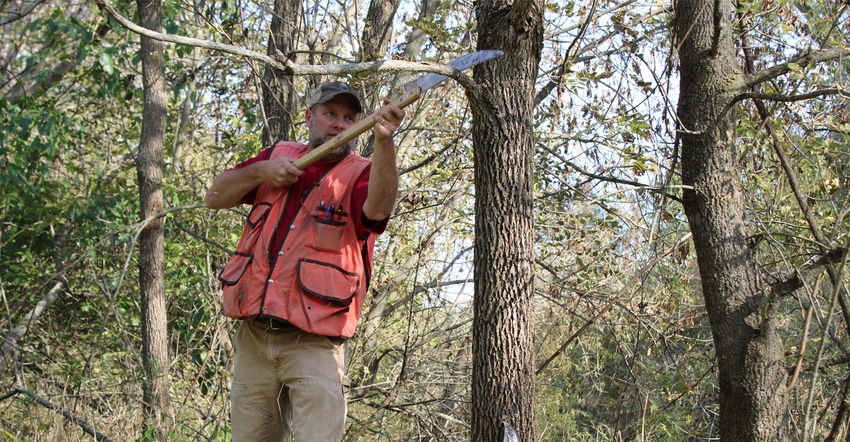February 6, 2020

Once the snow and ice begin to melt, Iowans should be able to get an early start on at least one aspect of property care: pruning trees.
According to the article Pruning Landscape Trees in the January edition of Iowa State University’s Acreage Living Newsletter, the best time to prune trees is usually mid- to late winter, or February through March. Pruning this time of year allows the tree to begin closing or compartmentalizing the wound when growth commences in early spring.
There are many reasons for pruning trees. Some common reasons are to improve the health and structure of the tree, remove growth that may interfere with nearby structures, and to prevent safety hazards for people, pets and livestock.
Steps to successful pruning
The article summarizes the basic steps to a successful pruning, using information from an Iowa State University Extension Sustainable Urban Landscapes publication. The article was compiled by Jeff Iles, professor and chair in horticulture at Iowa State, and Ann Marie VanDerZanden, associate provost for academic programs and professor of horticulture at ISU.
Pruning at other times of the year also are acceptable, but there are a few important exceptions. For example, summer is an excellent time to perform corrective pruning except for oak trees. Oaks should only be pruned during the dormant season. The authors also advise against pruning during periods of major biological change to the tree, including the spring from bud break through leaf expansion, and during the period of leaf color change in the fall.
Be careful with young trees
Training young trees could begin as early as the day of installation and includes best practices such as favoring the development of a central leader, avoiding removal of lower branches too soon, and working “with” (instead of against) the natural growth habit of each tree species.
The article provides several more pruning tips for young trees, and it explains the best way to make a pruning cut. Trees should be examined carefully before any cuts are made, and the eventual cut should preserve the “branch bark ridge” and the “branch collar” for the best wound closure.
Source: ISU, which is solely responsible for the information provided and is wholly owned by the source. Informa Business Media and all of its subsidiaries are not responsible for any of the content contained in this information asset.
You May Also Like




